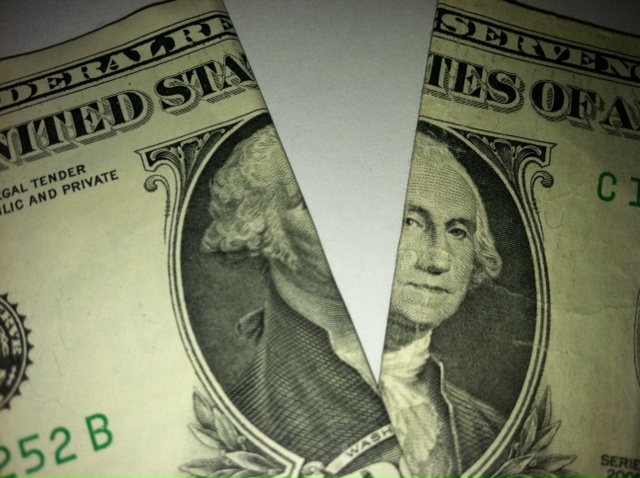Could stock splits be coming back in vogue? Apple Inc. (NASDAQ: AAPL) finally announced a major stock split. What is amazing is that the split was so large, on a seven-for-one basis. This move has been talked about by yours truly and by many market pundits for so long that it had become a dismissed dream, and no one really saw it coming this week. While this is being deemed as great news for Tim Cook and friends, there are still a slew of major high-priced shares on the market that need to follow suit with a stock split.
24/7 Wall St. is readdressing this notion of companies needing to split their shares. The first warning we have is that stock splits are not just a bull market indicator. Some investors and pundits will try to say that it could mean the peak of the bull market if they see too many stock splits. Anyhow, back to the bull market excitement.
Some other companies we had previously targeted for splits have actually decided to split their shares.
Google Inc. (NASDAQ: GOOG) was a key company we had been after to split its stock. The reality is that the last Google split was a sham. It simply was a seizure of control by Larry and Sergey with a dual class of stock, which robbed shareholders of any voice and vote. The seizure of control was so blatant that we don’t even see why Google should bother with an annual shareholder meeting any longer.
Another company that took our lead (or so we like to pretend) is MasterCard Inc. (NYSE: MA), peaking above $800 before announcing a split. The company now trades close to $74 after splitting 10-for-one, and now its share trading volume of more than 7 million shares per day is also more in-line with an $87 billion market value.
So, who else is on deck for potential stock splits? Also, which stocks might greatly benefit? The new split will take Apple’s stock closer to $80, depending on where the stock settles down.
24/7 Wall St. has identified five well-known stocks that would likely benefit from stock splits. We have included the cost of 100 shares of common stock today to show how expensive the stock is to buy in a round lot. Also included is the daily volume. And for the first time in years, we are also proposing by how much each company should split their stock by, based in part on Apple’s 7-for-1 split.
These are the five proposed stock split candidates from 24/7 Wall St.
Amazon.com
> Cost for 100 shares: $32,500
> Proposed split: 5-for-1
Amazon.com Inc. (NASDAQ: AMZN) trades roughly at $325 now, and its 52-week range is $245.75 to $408.06. Its market cap is close to $150 billion, and Jeff Bezos has taken Amazon into almost every single facet of retail consumer products. Amazon is a disrupting force for all retail segments, and the company’s insistence on running at negative or near negative margins means that it can attack retail endlessly until it wins. Amazon split its stock three different times in the most recent great technology boom and bull market: two-for-one in 1998, and three-for-one later in 1998 and lastly two-for-one in 1999. Its last stock split took shares to the equivalent of about $60 on par with today’s price of $325. A five-for-one stock split would take shares back closer to $60 again.
Biogen Idec
> Cost for 100 shares: $30,600
> Proposed split: 5-for-1
Biogen Idec Inc. (NASDAQ: BIIB) is not the only biotech with a monster nominal share price. Its price also has pulled back more than $50 from the peak during the most recent sell-off. Still, its trading volume of 1.8 million shares on average is just too small, considering its dominance in the MS drug treatment market. The company’s market cap is more than $72 billion, and a larger investor interest could help it become a mega-cap if the bull market continues — and if the biotech excitement returns. Without beating around the bush, a five-for-one or even six-for-one stock split would make sense here.
ALSO READ: Companies Betting on the Next Billion-Dollar Drugs
LinkedIn
> Cost for 100 shares: $17,500
> Proposed split: 3-for-1
LinkedIn Corp. (NYSE: LNKD) is supposed to be the social network for professionals, but shares went as high as $257 before coming back down to earth to around $175. The company has been public only since 2011 and has never split its stock price. Some investors own LinkedIn under $100 from around its IPO time in 2011, but its market cap is now down to about $21 billion (versus $156 billion for Facebook). It seems impossible to think that LinkedIn will ever match the dominance of Facebook, but how large it can get is anyone’s guess. In a bull market, and all other things being counted equally, LinkedIn shares at $175 versus Facebook’s shares trading at $64 just does not make sense on the surface (again, all other things counted equally). Facebook trades more than 68 million shares, and LinkedIn trades only about 3.3 million shares. In dollar terms that is $4.3 billion worth of Facebook stock trading each day versus only $577 million for LinkedIn. A three-for-one theoretical stock split would put the new nominal share price under $60.
Netflix
> Cost for 100 shares: $35,300
> Proposed split: 5-for-1
Netflix Inc. (NASDAQ: NFLX) has millions upon millions of monthly movie and media subscribers, and we have even pondered that Apple should just acquire the company. Its stock price has been incredibly volatile, falling from $400 to almost $50, and rising back to $400 before the most recent pullback. Its 52-week range is $204.02 to $458.00. With only about 3.3 million shares trading per day, a split actually might create that next wave of invigoration for shareholders who think Netflix should go to even higher highs. Its market cap is now $21 billion, and that is with shares down $100 from its peak. Netflix did split its stock back in 2004 on a two-for-one basis, but the cost basis back then was in the mid-$30s in today’s share price terms.
ALSO READ: Nine Stocks That Could Double in 2014
Priceline
> Cost for 100 shares: $122,000
> Proposed Split: 4-for-1
Priceline Group Inc. (NASDAQ: PCLN) has matured away from the prior William Shatner ads and it owns more sites and services. In fact, it even changed its name from Priceline.com to The Priceline Group to reflect its maturing nature. The last time we proposed a split, the stock was around $93.50 — now it is up around $1,220. There is one caveat here, and that was things once upon a time were so bad that Priceline did a reverse stock split, on a one-for-six basis back in 2003 after the tech-bubble imploded. Maybe asking management to reverse from a reverse split is asking too much, but this is for a bull market call rather than a bear market call. Without question, its share base has changed in the past 10 years since that reverse split took its stock from $4 at the time magically up to about $25 in today’s share price terms. The question we asked and still ask is why one share of this stock costs more than 90% of its plane tickets (and 100 shares could buy maybe 200 plane tickets). If Priceline wants to keep a super premium to the market, it could declare a four-for-one split and still have a $300+ share price.
****
As we have said before and will say again, stock splits actually do not change company fundamentals at all. They are often called nothing more than a gimmick. They effectively require no cash to change hands.
Another admission is that waves of active stock splits might indicate a peak to a bull market rather than marking anything about the future of the economy. The one beneficiary of splits would be the exchanges, NASDAQ OMX Group Inc. (NASDAQ: NDAQ) and IntercontinentalExchange Group Inc. (NYSE: ICE) — for the NYSE — would welcome these events due to greater share volume.
If these five companies were to split their shares in short order, it might create some news excitement for retail investors. In an extreme case, it might even arguably get more retail investors into stocks again.
All things being equal, these splits would be welcomed by most investors — with and without the caveats.
It’s Your Money, Your Future—Own It (sponsor)
Retirement can be daunting, but it doesn’t need to be.
Imagine having an expert in your corner to help you with your financial goals. Someone to help you determine if you’re ahead, behind, or right on track. With SmartAsset, that’s not just a dream—it’s reality. This free tool connects you with pre-screened financial advisors who work in your best interests. It’s quick, it’s easy, so take the leap today and start planning smarter!
Don’t waste another minute; get started right here and help your retirement dreams become a retirement reality.
Thank you for reading! Have some feedback for us?
Contact the 24/7 Wall St. editorial team.





